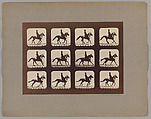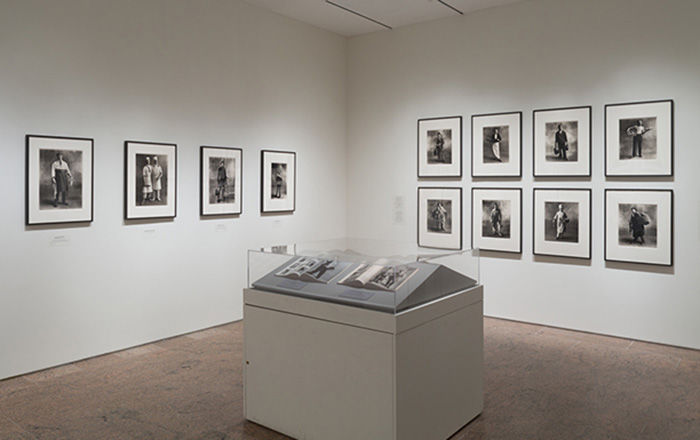Attitudes of Animals in Motion
Eadweard Muybridge British and American
Not on view
In 1872, Leland Stanford, former governor of California and president of the Central Pacific Railroad, asked Eadweard Muybridge to photograph a horse galloping at full speed. This simple request, intended to confirm Stanford’s theory that all of the horse’s feet were off the ground simultaneously at some point during its stride, launched Muybridge on a lifelong pursuit to record animals in motion.
He developed an ingenious method of stop-action photography: a battery of twenty-four cameras triggered either at timed intervals or as the horse’s legs tripped a wire suspended above the ground. The result was a sequence of discrete images representing postures previously invisible to the human eye.
This image cannot be enlarged, viewed at full screen, or downloaded.

